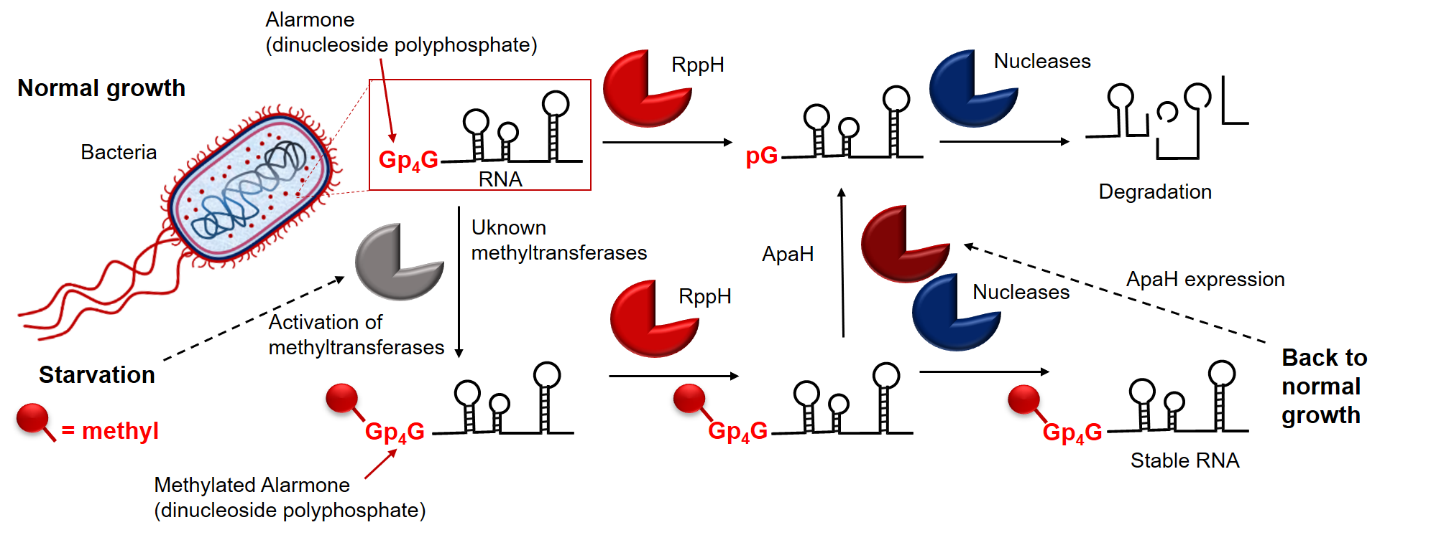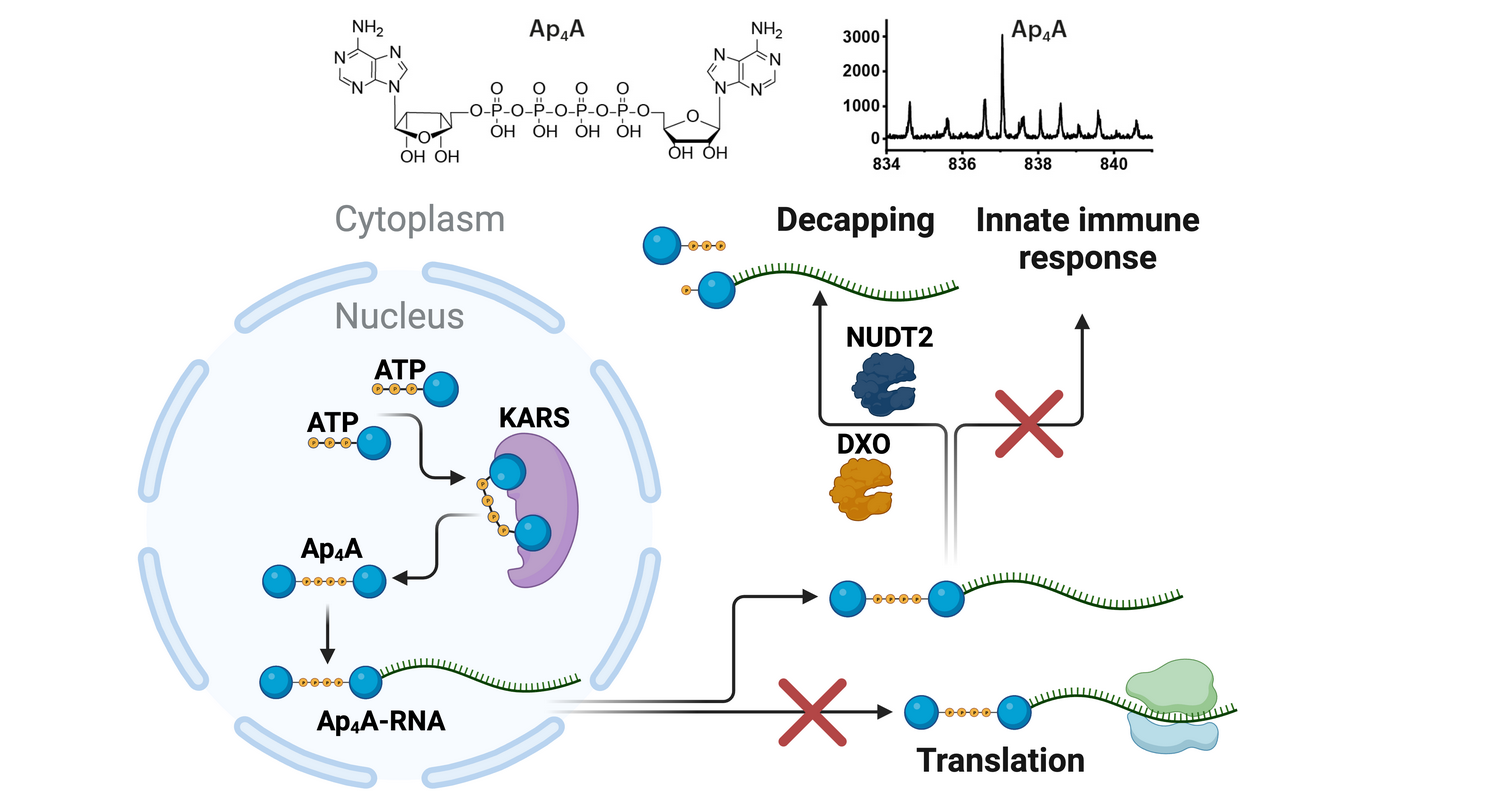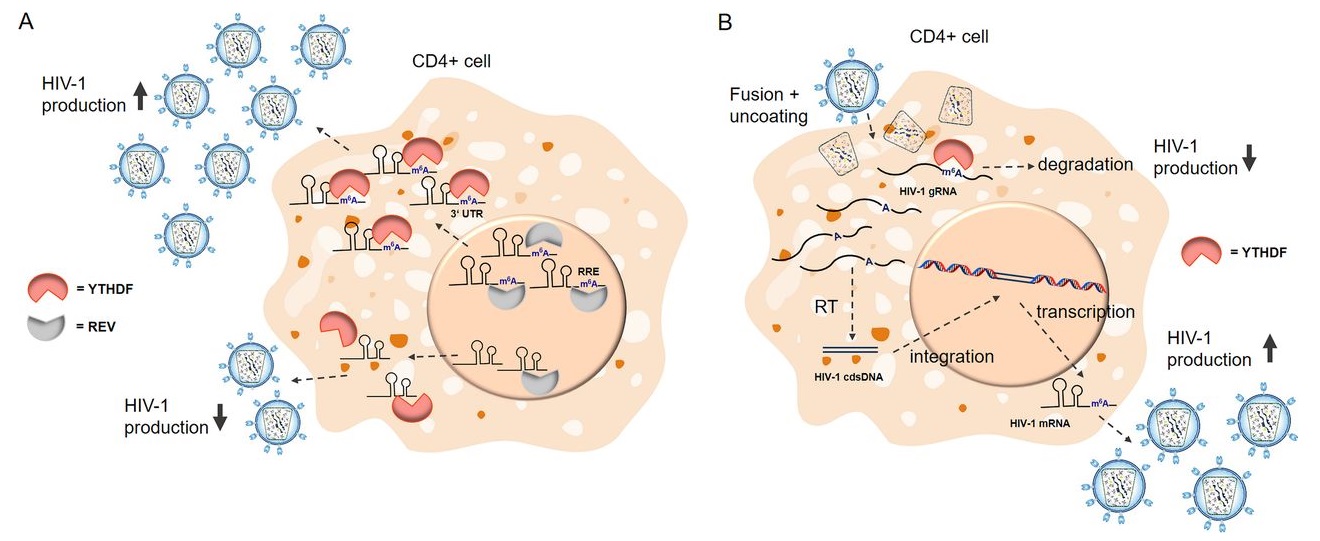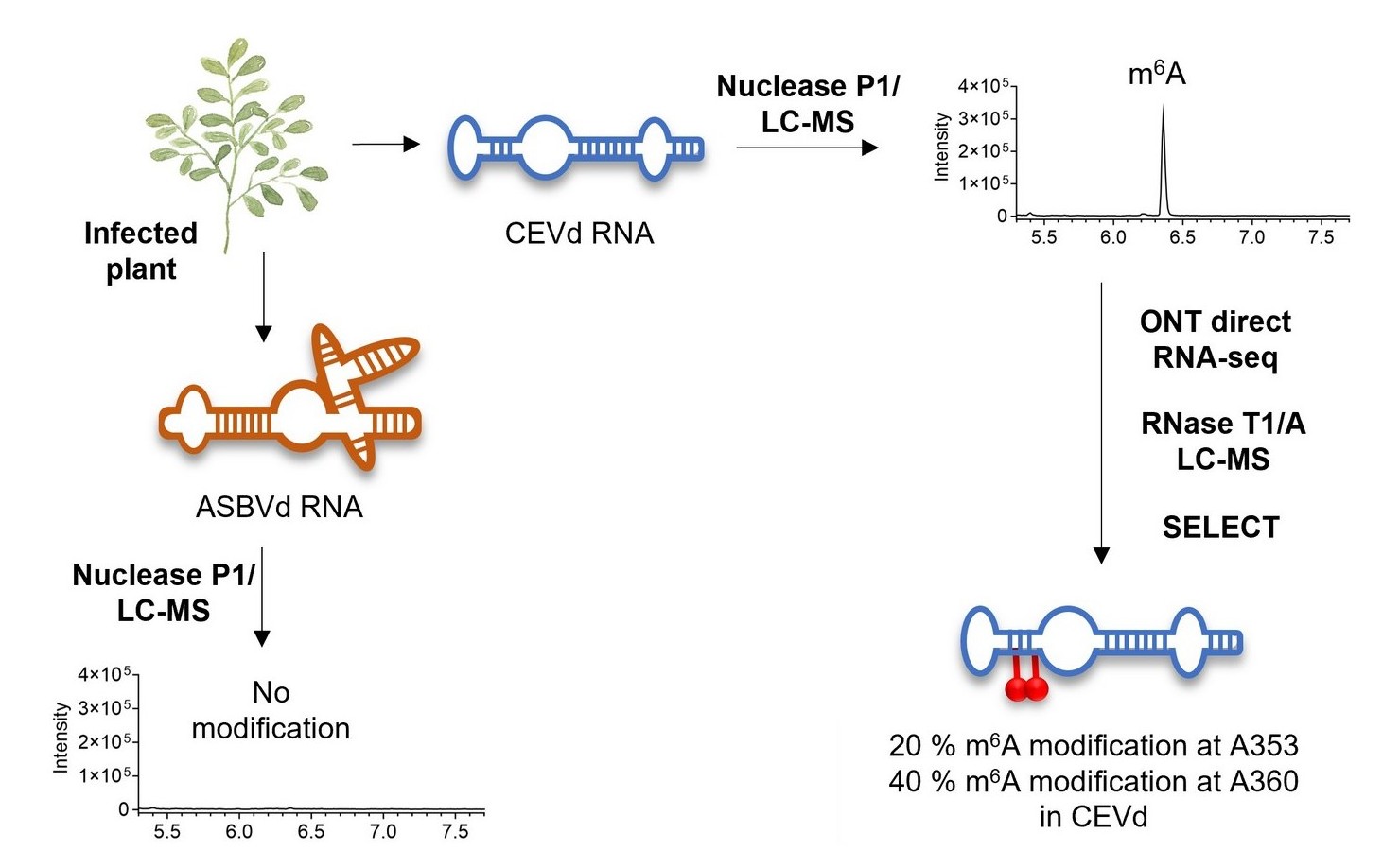The group of Dr. Hana Cahová of the Institute of Organic Chemistry and Biochemistry of the CAS, in collaboration with scientists from the Institute of Microbiology of the CAS, has discovered an entirely new class of dinucleoside polyphosphate 5’RNA caps in bacteria and described the function of alarmones and their mechanism of function. The discovery was recently published in the journal Nature Communications.
Dinucleoside polyphosphates are small signaling molecules found in all types of organisms. They have been known for more than fifty years and are often called “alarmones”, as their concentration in cells increases under stress conditions (alarm). These molecules influence various cellular functions, but the mechanism of their action was as yet unknown. Hana Cahová and her colleagues noticed that the structure of these alarmones was similar to that of RNA and presumed that the alarmones were in fact part of the RNA in the form of so-called caps. Indeed, using mass spectrometry, they detected nine new types of these structures as part of RNA.
"As chemists, we noticed the glaring similarities of these alarmones with the RNA structure, so we were able to discover something that has been hidden from biologists for fifty years," says Hana Cahová, head of the junior research group at IOCB Prague.
The researchers found that these molecules are accepted by RNA polymerases and used as the first building blocks in RNA synthesis. Moreover, they determined that dinucleoside polyphosphate capped RNA can be cleaved by two types of enzymes and thus degraded. Some of the dinucleoside polyphosphate RNA caps were methylated, and the researchers have shown that these methylations protected RNA from cleavage and further degradation.
The amount of dinucleoside polyphosphate capped RNAs significantly increased under starvation conditions. Therefore, the authors propose that these caps protect RNA from degradation under starvation conditions when the cells do not have enough building blocks for creating such macromolecules as RNA. In such situations, the cell cannot flexibly react to the demands of the environment, but it can retain at least some RNA. Once the cell has enough nutrition again, the capped RNA is degraded by a specific enzyme, and the cell can build new RNA to reflect the current situation.
This is the first work showing that the 5’ end status of RNA depends on environment and stress. Moreover, the discovery of alarmones in RNA can explain the mechanism of their action. This work also provides the first evidence of small signaling molecules – dinucleoside polyphosphates – acting as parts of the RNA.
The chemical biology group of Dr. Hana Cahová applies chemical methods to biological systems to better understand cellular processes. The team is especially interested in finding new RNA modifications in viruses and bacteria and understanding their role.
Original paper: Hudeček, O., Benoni, R., Reyes-Gutierrez, P.E. et al. Dinucleoside polyphosphates act as 5′-RNA caps in bacteria.
Nat Commun 11, 1052 (2020).
doi:10.1038/s41467-020-14896-8








